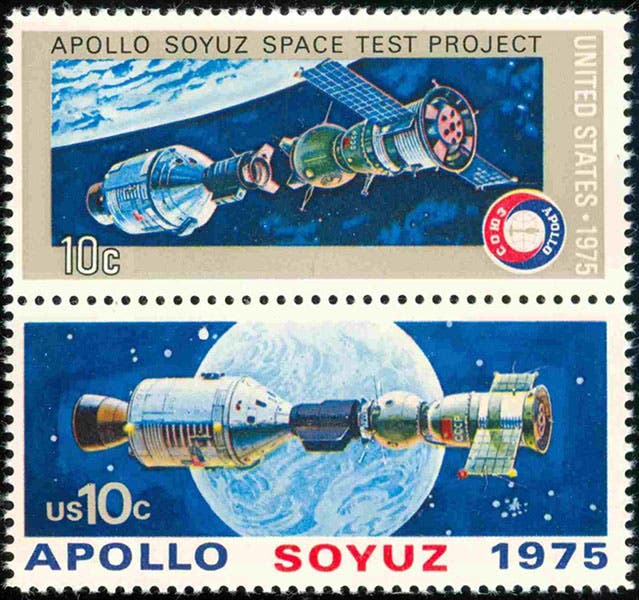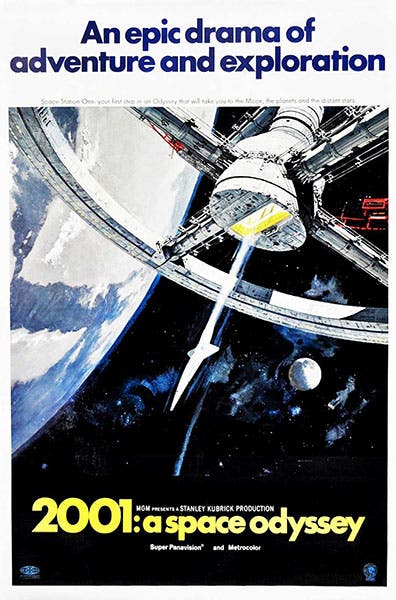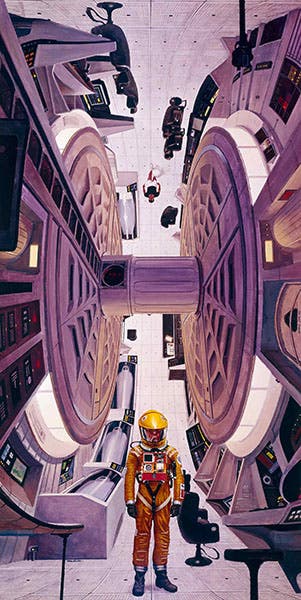Scientist of the Day - Robert McCall
Robert McCall, an American space artist, was born Dec. 23, 1919. McCall was an artist from his earliest days. He intended to go into commercial illustration, but he got sidetracked by airplanes, which he loved to draw. He made paintings for the U.S. Air Force for years after World War II. It was not much of a leap from aircraft to spacecraft; when NASA was established in 1958, he began to draw for them, serving as NASA’s unofficial resident artist for many years. He is well known for the oversize murals that grace the walls of the Johnson Space Center in Houston and the National Air and Space Museum at the Smithsonian (first image).
McCall also designed a number of U.S. postage stamps that commemorated the Apollo missions to the moon, as well as the Apollo Soyuz joint mission of 1975 (third image), and he even designed some of the patches that were commissioned for each Apollo crew. We see here his design for the last of the lunar missions, Apollo 17, which is dominated by the head – why not? – of the famous Apollo Belvedere statue in the Vatican (fourth image).
McCall also designed stamps for some of the NASA missions of the 1970s, such as Pioneer, and patches for many of the Space Shuttle missions. But I suspect that the McCall paintings that have been most visible to the public are two that he did for Stanley Kubrick and his 1968 film, 2001: A Space Odyssey, which were then turned into movie posters. One shows astronauts on the lunar surface, while another, perhaps McCall’s most famous work, depicts a ship leaving the giant orbiting space station (fifth image).
McCall also executed a large painting showing the inside of the revolving wheel of the space station for 2001: A Space Odyssey (sixth image). This painting was not used for a poster, for whatever reason. We hope it was a good one.
McCall is the second space artist we have featured in this column; we celebrated Chesley Bonestell just 6 months ago. Considering that they were both dealing with the same subject matter, their artwork is quite different, which is probably a good thing. McCall died in 2010, at the age of 90. You can see more of his work at the website devoted to his art. Dr. William B. Ashworth, Jr., Consultant for the History of Science, Linda Hall Library and Associate Professor emeritus, Department of History, University of Missouri-Kansas City. Comments or corrections are welcome; please direct to ashworthw@umkc.edu.











